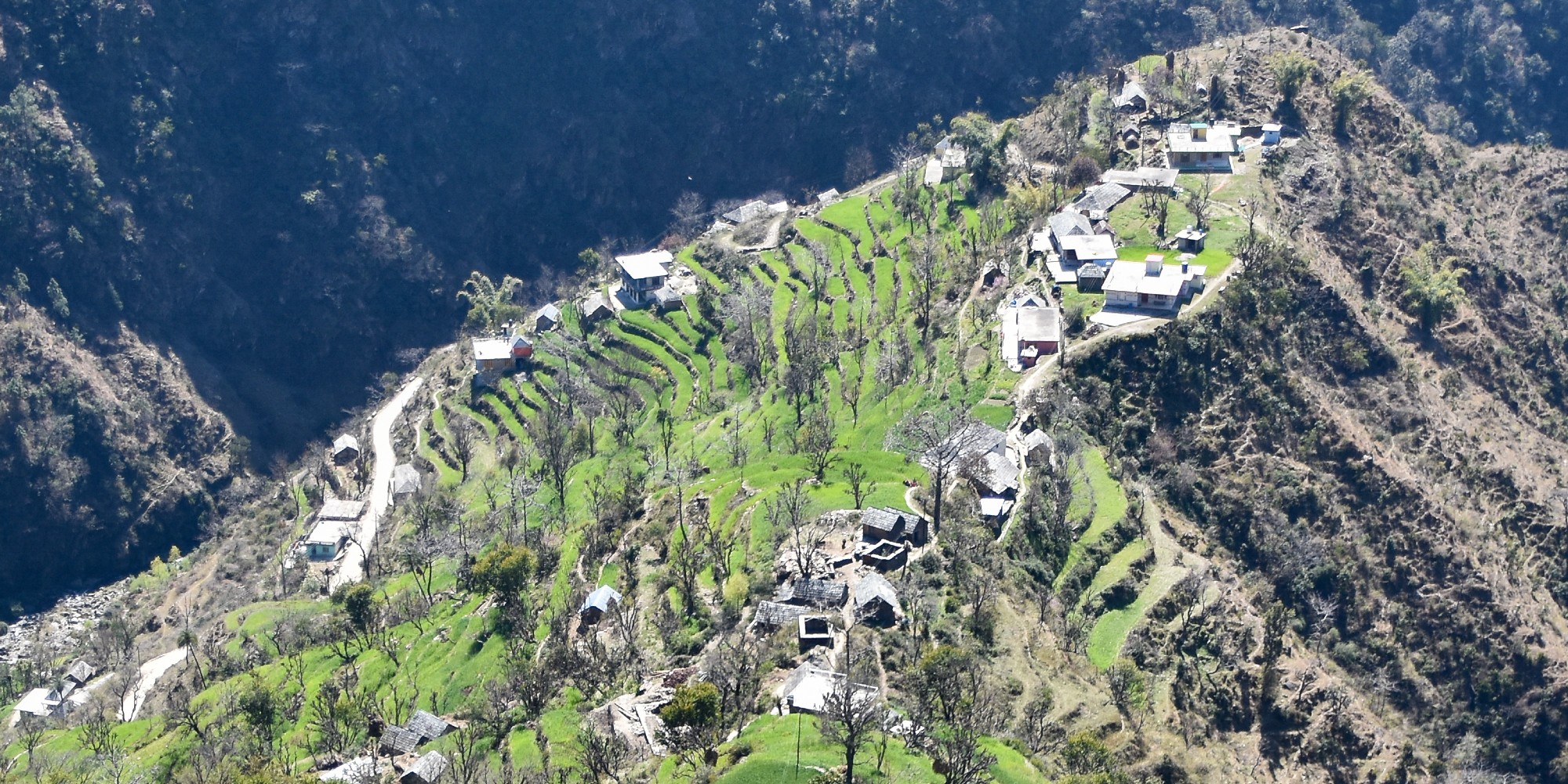Research project: Satellite imaging to enable sustainable crop irrigation among Himalayan farmers
ITU-researchers team up with colleagues at the Indian Institute of Technology in Mandi and Danish water management specialists DHI GRAS to create irrigation advisories based on satellite image analysis for Himalayan farmers in the northern part of India.
Yvonne DittrichCollaborationsComputer Science DepartmentResearchgreen ITsoftware
Written 29 September, 2021 09:40 by Theis Duelund Jensen
When plants on a field absorb water through their roots to grow, part of that water both transpires from the plant and evaporates from the surrounding soil into the atmosphere due to factors like sunlight, heat, and wind. This phenomenon is known as evapotranspiration, and it can provide farmers with valuable insights into the state of their crops when combined with sophisticated satellite image analysis.
A new research project entitled SaIAFarm (Sustainable Irrigation Advisories for Mid-Himalayan Farmers using SmartSatellite Image Analytics) headed up by the IT University of Copenhagen, the Indian Institute of Technology in Mandi, and DHI GRAS aims to use satellite image analysis of farmland in the Mid-Himalayans to provide smallholding farmers with sustainable irrigation advice. Farmers in the region rely on mountain streams and rainfall to irrigate their crops – ranging from maize, potatoes, peas, and wheat to tomatoes, pepper, cauliflower, and millets – and the random irrigation schedule often results in over- or under-watering. In addition, micro-climatic zones across the hilly terrain complicate the irrigation pattern.
“Each plant has an ideal evapotranspiration curve over its life-cycle. When you compare that data to the actual evapotranspiration data picked up by the satellite, it is possible to determine whether a plant on a field needs more or less irrigation,” says Professor in Computer Science at ITU Yvonne Dittrich, who spearheads the project. The ITU researchers will be supplying their expertise in developing a sustainable business model as well as a software ecosystem (SECO) to ensure continued use, maintenance and further development on the technological side of the project.

Terraced fields in the Himachal-region of India. An irrigation advisory will help local farmers optimise the yield of their crops (Photo: Timothy A. Gonsalves, CC BY-SA 4.0)
The raw satellite data is supplied by the European Space Agency’s Sentinel satellites that take images of Earth using bandwidths that enable the study of evapotranspiration. The image data from space will then be analysed and turned into irrigation advice for the farmers. The ITU researchers will among other things be in charge of developing software that connects the satellite image analysis provided by DHI GRAS with the farmers on the ground.
“We take a user-centred design approach because we obviously want the farmers to be able to use the advisory, but also because there may be technical issues that we cannot foresee. The design needs to address both the design of user interfaces, delivery technologies, and the embedding of the functionality in current farming practices. We know that most of the farmers have access to smartphones, but that does not mean that we can design a one-size-fits-all application,” says Yvonne Dittrich.
Another challenge is securing the longevity of the project once the basic software infrastructure is in place. Here Yvonne Dittrich relies on her years of experience in the field of software ecosystems. Basing the operational side of the project on a software ecosystem model allows for cooperation of different stakeholders invested in the success of the farmers:
“First and foremost, the project is intended to create value for the Mid-Himalayan farmers. However, the generated value also has to finance the maintenance and evolution of the software. Other stakeholders like seed and irrigation equipment providers might play a role. Governmental agencies might also be interested, as depleting water tables have long called for a sustainable water management. Finally, we are looking into fair business models for cooperation between high-tech providers and marginalised communities. At the IT University, we explore how a software ecosystem approach helps to integrate technical design with the development of governance and economic models to foster long term viability of the solution. There is a great research potential here as well as a lot of value for all stakeholders,” says Yvonne Dittrich.
The project was launched in March 2021 and will continue until 2024.
Theis Duelund Jensen, Press Officer, Tel: +45 2555 0447, email: thej@itu.dk